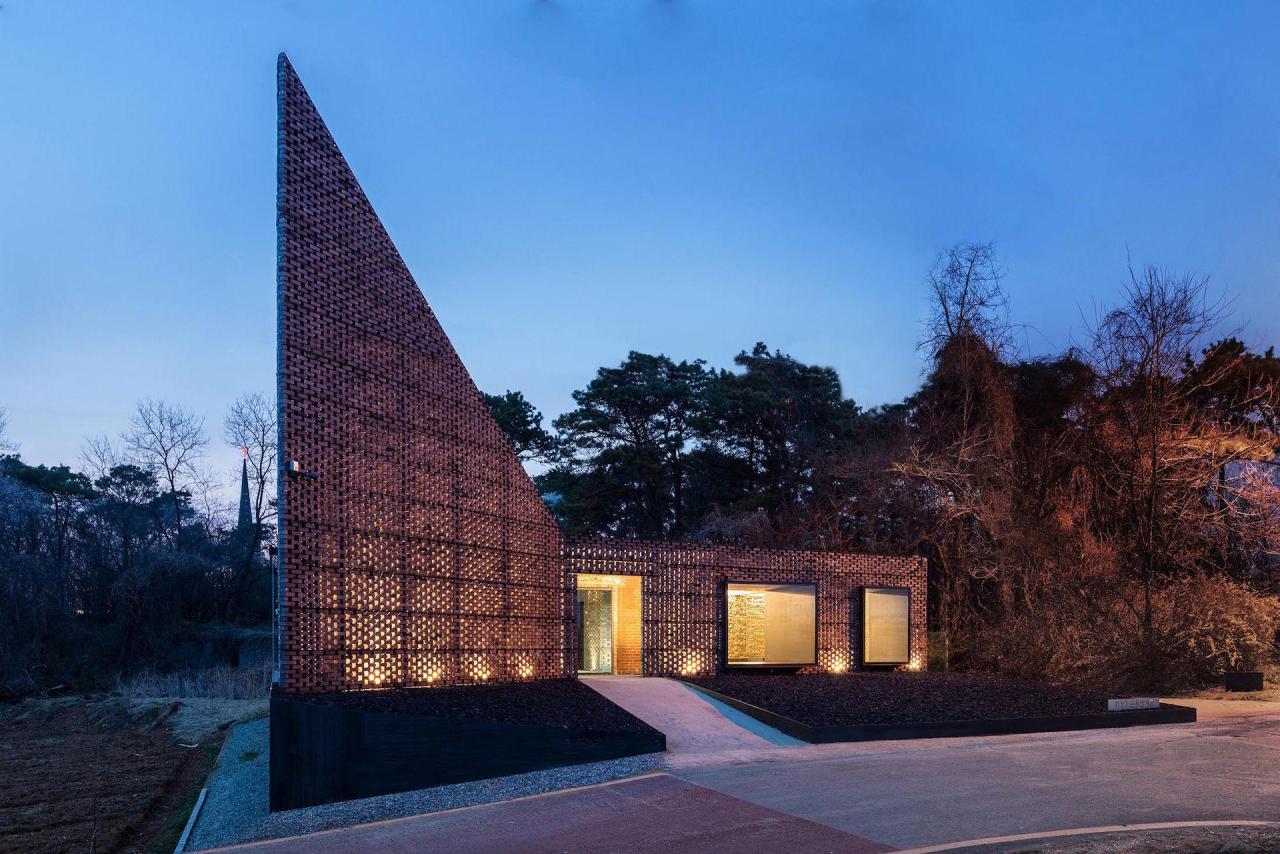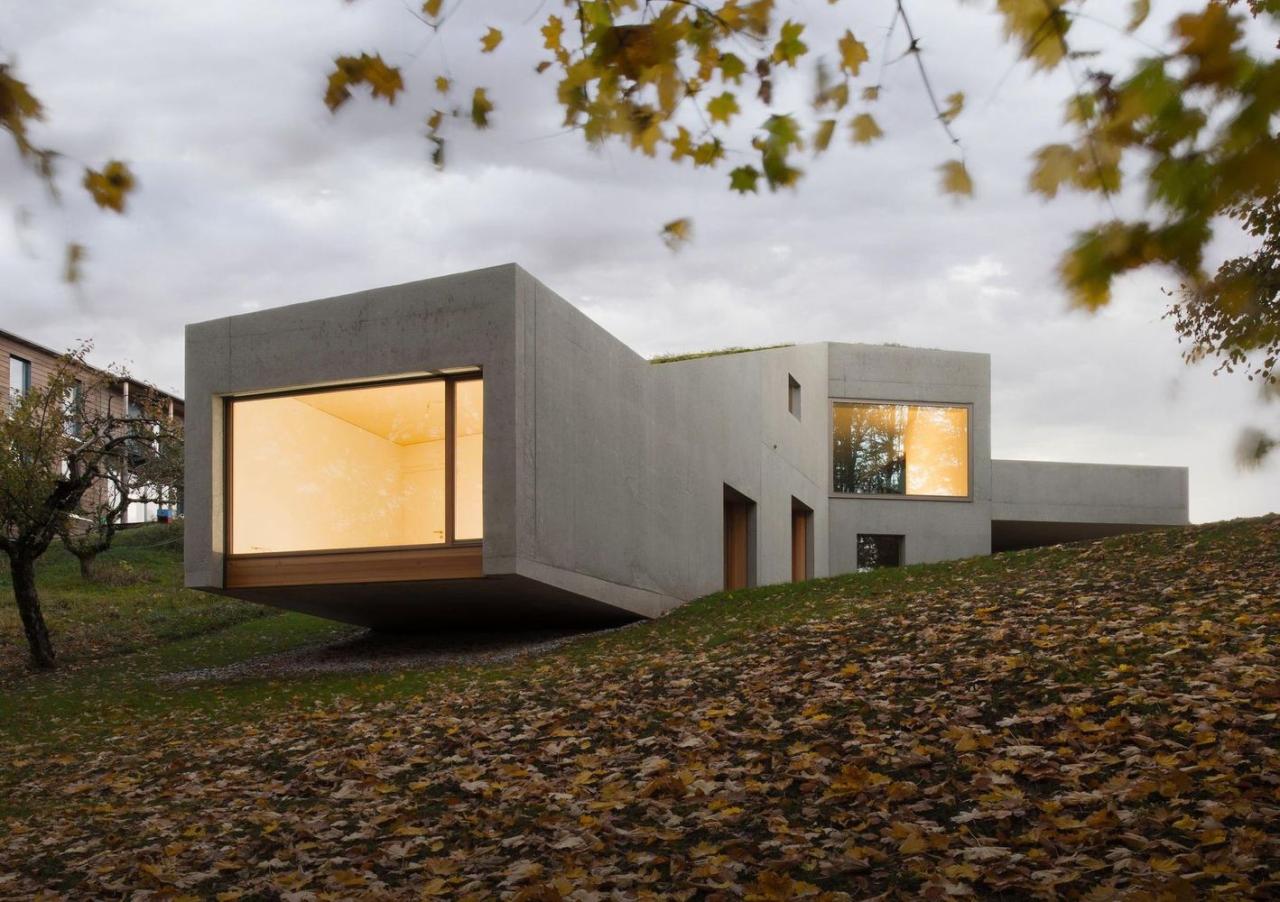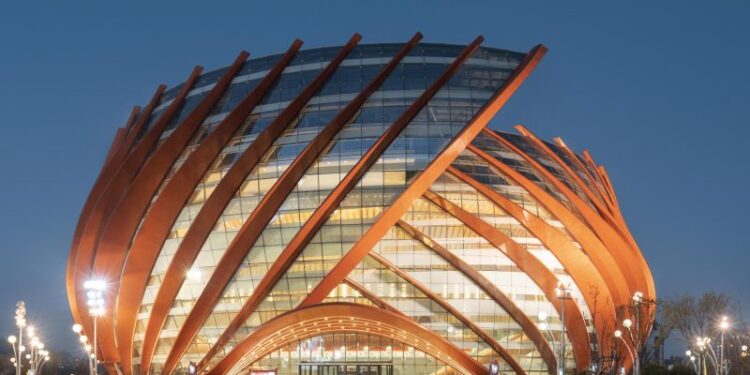Architecture awards serve as the pinnacle of recognition for creativity, functionality, and groundbreaking design in the built environment. Celebrating innovative designs not only honors the achievements of architects and designers but also propels the entire industry forward, inspiring future projects with its transformative impact. This article delves into the significance of architecture awards, examines the criteria used to determine the winners, and highlights some notable examples from across the globe. We will explore how these awards contribute to the evolution of design philosophy, sustainability, and urban development. The discussion is structured to provide insight into the key elements driving architectural innovation and to illustrate the ripple effects these accolades have on communities and the broader field of design.
The world of architecture is constantly evolving through the creativity and innovation of professionals who dare to break traditional boundaries. Architecture awards spotlight visionary projects that push the limits of design, function, and aesthetics. They promote the exchange of ideas and technical expertise among professionals, serving as a catalyst for transformation within urban landscapes and interior designs. These accolades have a dual purpose: to recognize outstanding achievements in architecture and to inspire new generations to pursue bold, imaginative projects that incorporate sustainable practices and advanced technologies.
Historically, architecture awards have served as benchmarks of excellence. They provide a platform for emerging trends, innovative construction techniques, and sustainable practices that address the challenges of modern society. By evaluating projects on parameters such as creativity, structural integrity, environmental impact, and social value, awarding bodies contribute to setting higher standards for future architectural endeavors.
The Role of Architecture Awards
Architecture awards are much more than ceremonial recognitions; they are instruments for change. They can influence market trends, affect investment decisions, and shift public perception towards innovative practices. In this context, awards become invaluable tools for encouraging risk-taking and pushing the envelope of what is achievable through design.
A. Recognition and Prestige
One of the primary roles of architecture awards is to bestow recognition upon exceptional work. Winning an award often translates into enhanced professional credibility and increased exposure in a competitive market. The benefits include:
-
A. Enhanced Reputation: Award-winning projects receive attention from media outlets, industry experts, and the public, solidifying the designer’s reputation.
-
B. Increased Visibility: Professional networks expand as the accolades highlight talent and innovation, leading to further opportunities.
-
C. Market Differentiation: Awards act as a quality stamp, differentiating a project or firm in a saturated market.
B. Setting Industry Standards
Architecture awards foster the creation of industry benchmarks that influence global standards. They underline the importance of:
-
A. Sustainable Practices: Many awards now incorporate sustainability as a critical criterion, promoting environmentally conscious practices.
-
B. Technological Integration: Recognizing projects that effectively implement digital tools and advanced materials.
-
C. Social Responsibility: Encouraging designs that have a positive social impact and enhance community engagement.
C. Fostering Innovation
Innovation is at the heart of architecture. Awards inspire creative thinking and encourage the exploration of unconventional solutions to architectural challenges. This role is magnified by the following factors:
-
A. Experimental Designs: Platforms for showcasing avant-garde concepts that might otherwise go unnoticed.
-
B. Collaborative Opportunities: Awards often lead to collaborations across different disciplines, fostering interdisciplinary innovation.
-
C. Educational Impact: They serve as case studies and learning tools for students and professionals, inspiring the next generation of architects.
Historical Perspective and Evolution
Tracing the roots of architecture awards offers insight into how the field has developed over time. Early recognitions were primarily local or national, focusing on traditional craftsmanship and utilitarian design. Over the decades, global awards emerged that celebrated not just the aesthetics but also the functional, sustainable, and societal contributions of a project.
A. Pioneering Awards in Architecture
Historically significant awards, such as the Pritzker Architecture Prize, have set high standards of excellence and have become synonymous with architectural innovation. The Pritzker Prize, for instance, is often referred to as the “Nobel Prize of Architecture” and has been awarded to some of the most influential architects globally.
B. The Rise of Sustainable Design Awards
With the pressing challenge of climate change, many awards have incorporated sustainability as an essential criterion. These accolades recognize projects that successfully integrate renewable energy, eco-friendly materials, and innovative waste reduction techniques.
C. Impact on Global Architectural Trends
The evolution of these awards has paralleled major shifts in architectural trends—from modernist movements to postmodern experimentation and now to digital and sustainable innovations. Awards have also encouraged the adoption of digital fabrication methods and the integration of smart technologies in building design.
Criteria for Awarding Innovative Designs
Judging architectural designs requires a multifaceted approach that goes beyond visual appeal. Panels evaluate numerous aspects to gauge the overall excellence of a project. The criteria are continuously refined to keep pace with technological advancements and evolving societal needs.
A. Innovation and Creativity
Innovation is the cornerstone of any award-winning project. Judges evaluate how a design introduces new ideas or approaches to traditional challenges.
-
A. Originality: The uniqueness of the design concept and its departure from conventional styles.
-
B. Conceptual Innovation: The extent to which a project challenges established norms or integrates emerging technologies.
-
C. Problem-Solving: Creative solutions that address specific architectural challenges effectively.
B. Functionality and Usability
An innovative design must be as practical as it is visionary. Projects are scrutinized on how well they balance aesthetics with functionality.
-
A. Usability: The design should cater to the needs of its users, ensuring convenience and accessibility.
-
B. Flexibility: Adaptability to various functions or future modifications is highly valued.
-
C. Efficiency: Effective use of space, materials, and energy is fundamental for modern architecture.
C. Sustainability and Environmental Impact
Today’s architectural innovations are measured by their ability to mitigate environmental impacts. Sustainability has become an essential element in awarding recognitions.
-
A. Eco-Friendly Materials: Use of sustainable, recycled, or low-impact building materials.
-
B. Energy Efficiency: Designs that lower energy consumption and utilize renewable energy sources.
-
C. Climate Adaptation: Construction practices that increase resilience to environmental challenges such as flooding, heatwaves, or storms.
D. Cultural and Social Value
Architecture does not exist in a vacuum; it profoundly influences and is influenced by its social context. Awards now often prioritize projects that enrich cultural heritage and enhance community well-being.
-
A. Cultural Integration: Designs that respect and incorporate local traditions and history.
-
B. Social Impact: Projects that foster community engagement and promote social inclusivity.
-
C. Public Spaces: The design of accessible spaces that encourage public interaction and cultural exchange.
Notable Architecture Awards
Several prestigious awards highlight innovative architectural design on the global stage. Recognizing the achievements of standout projects, these awards contribute significantly to the narrative of modern architecture.
A. Pritzker Architecture Prize
The Pritzker Prize is one of the most revered honors in architecture. Since its inception, it has been awarded to architects whose work demonstrates a combination of creativity, sustainability, and exceptional impact on the built environment. Winners are celebrated for their visionary contributions and long-lasting influence on the field.
B. AIA (American Institute of Architects) Awards
The AIA Awards honor projects that embody excellence in design and innovation within the United States. The awards focus on a range of aspects including sustainability, functionality, and aesthetic excellence. Their reach and reputation extend globally, influencing trends and standards internationally.
C. UIA (International Union of Architects) Gold Medals
The UIA Gold Medals recognize outstanding contributions to architecture at the international level. These accolades celebrate designs that elevate the human experience, foster community, and advance sustainability practices. The UIA’s rigorous evaluation process ensures that only the most groundbreaking projects are honored.
D. World Architecture Festival Awards
The World Architecture Festival (WAF) Awards are part of a global celebration of best practices in design. They bring together leading figures from around the world to assess projects based on innovation, sustainability, and overall impact. The awards highlight projects that are not only aesthetically impressive but also functional and forward-thinking.
E. RIBA (Royal Institute of British Architects) Awards
The RIBA Awards celebrate architectural excellence in the United Kingdom and beyond. They are renowned for their stringent criteria that focus on technical innovation, design quality, and sustainability. Recognizing projects that set new benchmarks, these awards influence broader architectural trends and industry practices.
Global Impact and Cultural Shifts
Architecture awards have a significant ripple effect on global design trends. Beyond awarding prestige, these recognitions influence how cities and communities develop by setting examples that can be emulated around the world.
A. Inspiration for Future Projects
Award-winning projects often serve as inspiration for future designs. Architects and designers study these projects to learn about new materials, construction techniques, and sustainable practices that they can integrate into their own work.
-
A. Educational Impact: Award winners become case studies in architecture schools and training programs.
-
B. Innovation Cycle: The visibility of these projects encourages an ongoing cycle of innovation, where new ideas build upon previous successes.
-
C. Design Trends: Awards shape trends and guide the evolution of architectural styles over time.
B. Economic and Social Benefits
Successful projects that have gained recognition through awards often experience a boost in funding, increased property values, and heightened community interest. These benefits include:
-
A. Investment Attraction: Award-winning designs attract investors and developers who are keen to replicate similar success.
-
B. Urban Regeneration: Notable projects often spark revitalization efforts in urban areas, leading to broader economic growth.
-
C. Community Engagement: Iconic buildings become cultural landmarks, fostering a sense of pride and identity within the community.
C. Promoting Sustainable Development
With global sustainability challenges at the forefront, architecture awards that prioritize eco-friendly practices play a crucial role in promoting environmental responsibility. Recognized projects often showcase innovative techniques that reduce carbon footprints and improve resource efficiency. This drives the industry toward greener building methods and inspires cities to adopt sustainable urban planning practices.
The Process Behind the Scenes
Understanding how architecture awards are determined involves looking at the evaluation process behind the scenes. Awarding bodies typically follow a rigorous procedure involving multiple stages of review.
A. Nomination
Projects are usually submitted by firms or nominated by peers and industry professionals. This stage involves curating a list of promising projects that meet the criteria for innovation, sustainability, and social impact.
-
A. Documentation: Detailed descriptions, blueprints, and performance metrics are submitted for evaluation.
-
B. Peer Review: Experienced architects and industry experts participate in the nomination process.
-
C. Preliminary Screening: An initial review is conducted to filter out projects that do not meet the minimum criteria.
B. Jury Evaluation

A panel of jurors, typically composed of renowned architects, critics, and educators, is responsible for reviewing the shortlisted projects in depth. This evaluation focuses on both qualitative and quantitative aspects of the designs.
-
A. Criteria-Based Assessment: Jurors assess projects based on innovation, sustainability, functionality, and aesthetic value.
-
B. Discussions and Deliberations: In-depth discussions help jurors reach a consensus on the merits of each project.
-
C. Final Selection: The panel ultimately selects the winners who best exemplify excellence and innovation.
C. Award Ceremony
Following the evaluation, an award ceremony is organized where the winners receive their accolades. These ceremonies are often well-publicized events, drawing significant attention from media outlets, industry stakeholders, and the public alike.
-
A. Public Recognition: The event highlights the achievements of the winners on a global platform.
-
B. Networking Opportunities: Ceremonies foster connections among industry leaders, paving the way for future collaborations.
-
C. Media Coverage: Extensive media coverage helps extend the impact of the awards, influencing broader public perception of architectural trends.
Future Trends in Architecture Awards
As the architectural landscape continues to evolve, so too will the nature of architecture awards. Innovations in technology, changing societal needs, and the ongoing quest for sustainability are poised to redefine what excellence in design means.
A. Embracing Technological Innovations
The integration of digital tools in architecture is revolutionizing design processes. Future awards may increasingly recognize projects that leverage advanced technologies such as artificial intelligence, virtual reality, and sustainable materials through digital fabrication.
-
A. Digital Design Tools: Recognition for the use of innovative software that enhances design efficiency.
-
B. Virtual Reality Showcases: Award ceremonies may include virtual tours, allowing a broader audience to experience the designs.
-
C. Data-Driven Insights: Integration of performance analytics that measure a building’s sustainability and usability.
B. Prioritizing Environmental and Social Responsibility
As global challenges such as climate change and social inequality intensify, architecture will increasingly be judged on its ability to address these issues.
-
A. Carbon-Neutral Designs: Emphasizing projects that achieve or aim to reach carbon neutrality.
-
B. Community-Centric Architecture: Recognizing designs that actively contribute to social wellbeing and community development.
-
C. Adaptive Reuse Projects: Awards may increasingly celebrate projects that repurpose existing structures, reducing waste and promoting sustainability.
C. Global Collaboration and Cross-Cultural Integration
The future of architecture is more global than ever. Awarding bodies are likely to place more emphasis on projects that integrate cross-cultural elements and foster international collaborations. This will help bridge diverse architectural traditions and address global challenges with a unified approach.
-
A. Multinational Jury Panels: Greater diversity among jurors enriches the evaluation process.
-
B. International Submissions: Encouraging projects from emerging markets to gain exposure on a global stage.
-
C. Cultural Sensitivity: Recognizing designs that thoughtfully integrate local traditions and global innovation.
Case Studies of Award-Winning Projects
To illustrate the diverse impact of architecture awards, it is beneficial to examine specific examples of projects that have garnered significant accolades. These case studies demonstrate how innovative design can address practical challenges while pushing aesthetic boundaries.
A. The Green Tower – A Model of Sustainability
An exemplary project, “The Green Tower,” has received multiple awards for its revolutionary approach to sustainable high-rise construction. Key aspects of the project include:
-
A. Energy Efficiency: The tower incorporates solar panels, wind turbines, and rainwater harvesting systems to minimize its environmental impact.
-
B. Innovative Materials: Use of recycled concrete and low-carbon materials has set new benchmarks in sustainable construction.
-
C. Community Integration: Designed to include public gardens, community spaces, and retail areas, the building not only serves its occupants but also the wider neighborhood.
B. Urban Renewal – Revitalizing Historic Spaces
Another standout case is an urban renewal project that transformed an old industrial district into a vibrant cultural hub. This project was particularly celebrated for:
-
A. Adaptive Reuse: Converting outdated factories into modern art spaces and residential units.
-
B. Preservation: Maintaining the historical integrity of the area while integrating modern amenities.
-
C. Social Impact: The project revitalized local economies, creating jobs and fostering community engagement.
C. Digital Pavilion – Merging Technology with Design

A digitally-driven project, known as the “Digital Pavilion,” has been lauded for its seamless integration of interactive technologies within a public space. Noteworthy features include:
-
A. Interactive Installations: Touch screens and augmented reality elements invite visitors to engage directly with the installation.
-
B. Flexibility: The pavilion serves multiple purposes – as an exhibition space, community center, and digital laboratory.
-
C. Sustainable Design: Built with eco-friendly materials, it serves as a model for future public infrastructure projects.
Challenges Facing Modern Architects
Despite the celebration of innovative designs through awards, architects face numerous challenges that can stifle creativity and impede the adoption of new ideas. Recognizing these challenges is essential for understanding the context in which modern designs are conceived.
A. Economic Constraints
Budget limitations remain a persistent challenge for many ambitious projects. Finding a balance between innovative design and economic feasibility requires:
-
A. Cost-Effective Materials: The need for materials that are both sustainable and affordable.
-
B. Budget Management: Allocating resources efficiently without compromising the vision of the design.
-
C. Investment in Technology: Securing funding for advanced technologies that drive innovation.
B. Regulatory and Zoning Issues
Navigating the complex web of local, national, and sometimes international building regulations can constrain innovative architecture. Challenges include:
-
A. Zoning Laws: Restrictions that may inhibit creative use of space.
-
B. Environmental Regulations: Compliance with strict environmental standards that can both drive and limit innovation.
-
C. Permitting Processes: Lengthy and complex approval processes that delay the implementation of new designs.
C. Balancing Tradition and Innovation
Architects must often strike a balance between respecting cultural heritage and introducing modern innovations. This challenge is particularly prominent in cities with rich historical backgrounds. Considerations include:
-
A. Preservation vs. Modernization: Integrating state-of-the-art designs into traditional settings.
-
B. Cultural Sensitivity: Ensuring that new projects honor local traditions and community values.
-
C. Evolution of Design Aesthetics: Embracing innovation while maintaining a connection to historical roots.
The Future Outlook of Architecture Awards
Looking ahead, architecture awards will continue to evolve in tandem with the architectural landscape. The future promises an increasing emphasis on digital innovation, sustainable practices, and global collaboration.
A. Embracing Digital Transformation
Digital technologies will further revolutionize architectural design and evaluation. Future awards may include:
-
A. Virtual Competitions: Leveraging digital platforms to allow global participation and real-time judging.
-
B. Augmented Reality Exhibitions: Enhancing the presentation of projects through immersive digital experiences.
-
C. Big Data Analytics: Utilizing performance data to objectively assess a project’s sustainability and usability.
B. Green and Smart Architecture
As climate change and urbanization remain pressing challenges, awards will increasingly highlight projects that offer smart, sustainable solutions. This trend includes:
-
A. Zero-Carbon Buildings: Recognizing structures that achieve minimal carbon footprints.
-
B. Smart Technology Integration: Evaluating the role of IoT and AI in enhancing building performance.
-
C. Resilient Urban Design: Celebrating projects that are designed to be flexible and adaptive to the changing environment.
C. Collaborative and Interdisciplinary Approaches
The future of architecture lies in collaboration. Awards may reward projects that bring together architects, engineers, urban planners, and even sociologists to create designs that are both innovative and deeply responsive to community needs.
-
A. Interdisciplinary Teams: Emphasizing the importance of collaboration among different sectors.
-
B. Cross-Cultural Designs: Highlighting projects that integrate global influences and local insights.
-
C. Public-Private Partnerships: Recognizing the role of cooperative projects in bringing ambitious designs to life.
Conclusion
Architecture awards celebrate more than just aesthetic brilliance; they honor the spirit of innovation that drives the construction of our built environment. Through rigorous criteria that assess originality, functionality, sustainability, and social impact, these recognitions serve as benchmarks for excellence in an industry that is continually reimagining what is possible.
Award-winning projects push the boundaries of traditional design, inspiring new generations of architects and transforming urban landscapes worldwide. They create a ripple effect that advances sustainable practices, technological integrations, and community-centric design philosophies. As the industry continues to confront challenges—from economic constraints to regulatory hurdles—the role of architecture awards remains essential. They shine a light on visionary ideas and foster a culture of continuous improvement that benefits society on both local and global scales.
In a world where architecture intersects with technology, sustainability, and cultural expression, the celebration of innovative designs is not merely an accolade but a necessity. It propels the built environment into a future that is responsive, responsible, and remarkably inspiring. Architecture awards thus serve as both a mirror reflecting the current state of the art and a beacon guiding future projects toward excellence.












